It might strike you as both bizarre (and equally fascinating) to drive to Spiti valley and Kinnaur during wintertime. Though for solitude seekers and wildlife photographers — with a goal to unplug and get off-grid, or spot endangered (now vulnerable) snow leopards and assorted mammal and bird species in Kibber wildlife sanctuary — the snowscapes of the Spiti valley and Kinnaur Himalayas are a true refuge and a place for the mindful pause.
Likewise, winter months are great to learn how the people of Spiti valley survive in freezing, sub-zero temperatures for months.
- Snow Leopard Photo Expedition in Spiti (2023-24)
- Kibber Wildlife Sanctuary
- Sighting and photography tips
- Snow Leopard Sighting Rising In Spiti Valley
- Snow Leopard Spotting Expedition in Kibber
- Spiti Valley Winter Road Trip Itinerary
- Weather conditions and essentials to carry
- Kalpa-Charang winter hikes and recces
Snow Leopard Photo Expedition in Spiti (2023-24)
Snow Leopard Safari Rundown
| Best Time | December to March |
| Difficulty | Moderate |
| Max. Altitude | 4270m (Kibber village) |
| Spotting Locations | Rong Nala gorge of Kibber Wildlife Sanctuary, Plateaux surrounding Chicham village and Pin valley |
| Key wildlife species | Snow Leopards, Himalayan Ibex, Himalayan Blue Sheep, Red fox, Himalayan Snow Cock, White breasted stone / beech marten (aka Himalayan Weasel), Eurasian Lynx, Tibetan Sandgrouse, and Woolly Hare |
| Trip span | 9 Days and 8 Nights |
| Scheduled Events in 2024 | January 1,12 and February 5,15 |
| Activity | Hiking, wildlife spotting and photography |
The winter trip to Spiti has its own charm and vulnerabilities. The charm lies in the tranquillity — so peaceful that you would hear yourself breathing — of the Spiti valley, less to no crowd, snowy winter landscape, frequent sightings of rare Himalayan wildlife like snow leopards, no electricity, and no internet.
Kibber Wildlife Sanctuary
The 2220.16 square kilometers area around Kibber village of Spiti was declared as wildlife sanctuary by Indian government on 25 April 1992. Kibber and 12 other villages located along the perimeter of the sanctuary forms its southern boundary.
Kibber Wildlife Sanctuary (WLS) is also a part of 16th Cold Desert biosphere reserve (declared a biosphere reserve in 2009).
Wildlife found in Himalayan cold deserts (notably in Kibber WLS) are:
- Snow leopard
- Himalayan ibex
- Blue sheep (bharal)
- Tibetan wolf
- Red fox
- Number of bird species (like Kestrel, Finches, Chough, Larks, Red starts)
- Eurasian Lynx
- Tibetan Sandgrouse
- Himalayan wolf (Canis lupus)
- Long tailed marmot (Marmota caudata)
- Wooly Hare (Lepus oiostolus)
- Pika (Ochotona roylei)
Along with Pin Valley National Park, Kibber wildlife sanctuary has been identified as “Important Bird Area” by Birdlife International.
The cold deserts (Lahaul and Spiti district and upper Kinnaur region) in Himachal Pradesh cover about 20% of its total (55673 square km) geographical area. The Himalayan cold deserts have distinct cultural and geographical features. They are characterized with regions of:
- Low precipitation (due to rain shadow effect)
- Large difference in day and night temperatures
- Low humidity
- Short summers
- Freezing cold and windy winters
- Diverse flora and rare fauna
Spiti valley of Himachal Pradesh (which literally translates to an abode of snow) is located in trans Himalayan ranges, the outermost range of the Himalayas. Spiti is a place frozen in space and time with vast valleys, glaciers, interesting geological features and towering trans-Himalayan peaks.

The extreme environmental events like avalanches, snowstorms, landslides, and rockfalls are common is this part of Himachal Pradesh state. Rare Himalayan wildlife like Snow leopard has adapted their body to survive under such extreme climatic conditions.
Based on about a decade long snow leopard photography experience and working with local spotters, the team of Raacho Trekkers schedule their snow leopard expedition trips in January and February month.
How To Sight Snow Leopards In Kibber WLS?
Patience is key in a snow leopard expedition, as with any wildlife expedition. You need to be at the right spotting places at the right time. It is not an easy task to pursue these enigmatic cats who live and are prey on Himalayan blue sheep at an altitude well over 3,500 meters from the sea level, at temperatures close to -30 degrees.

The right times are early morning and late evenings. And the right places are Kibber wildlife sanctuary and Kibber-Chicham village plateaux, slopes between Kee, Gete and Tashigang, Shilla Nalla area, plateau around Langza, Hikkim, Komic and slopes around Demul, Salung, Rama and Lalung.
Sighting and photography tips
Here are some tips to increase your chances of sighting the snow leopards.
- Hire local spotter/guides: They have the best knowledge of the terrain, the weather, best time and the spotting locations in their area. They can also help you with sanctuary/national park permits, logistics, and safety.
- Plan your trip after a snowfall: Snow leopards are easier to spot against a snowy background, as their grey fur stands out more. Snow also makes their tracks more visible, which can help you track them down.
- Be patient and persistent: Snow leopards are hailed as the master of camouflaging. They are rare and shy animals that can go unnoticed for days or weeks. You need to be prepared to spend long hours in the cold, waiting and watching for any sign of movement.
- Follow their prey: Snow leopards feed on mountain ungulates, such as ibexes and blue sheep. If you find these animals, you have a higher chance of finding a snow leopard nearby. Look for rocky outcrops, cliffs, and ledges where snow leopards like to ambush their prey.
- Study their behavior: Snow leopards have unique and fascinating habits that can help you understand and anticipate their actions. You can learn more about them from online resources, such as the Snow Leopard Trust and National Geographic, books, such as The Snow Leopard by Peter Matthiessen and Snow Leopard: Stories from the Roof of the World by Don Hunter, or talk to experts who have photographed snow leopards in the wild.
- Use the right equipment: Snow leopards are usually active at dawn and dusk, when the light is low and the colors are muted. You need a camera with a large aperture lens, a high ISO setting, and a fast shutter speed to capture sharp and clear images. You also need a sturdy tripod (Leofoto offers a great range of tripods for wildlife photography) to stabilize your camera and reduce camera shake.
- Capture the action: Snow leopards are agile and powerful hunters that can leap up to six times their body length. Shooting a snow leopard chasing an Ibex is a dream of every photographer. To photograph these spectacular moments, you need to use a continuous shooting mode and a fast shutter speed. You also need to be ready and alert, as these events can happen in a matter of seconds.
- Visit during the mating season: The best time to see and photograph snow leopards is from January to early March, when they are more active. This is also the time when they mate and form pairs. You can witness and capture the intimate and playful interactions of these elusive animals.
Drive To Kinnaur & Spiti valley in Winter
Snow drives to Kinnaur and the Spiti valley in winter is a complete digital detox and an expedition itself.
The winter Spiti valley itinerary covers one of the most treacherous parts of NH5 and Sumdo to Kaza road. In winters, you get to know local life and culture more intimately and see for yourself how hard it is to survive in the Himalayas.

The fragility & hardships of the winters in Spiti valley is punctuated by the limited road connectivity, driving on icy roads, no running tap water, limited warm water, subzero temperatures, and no room heating.
But the major concern is always the fragile road connectivity, which gets snapped when there is heavy snowfall and avalanches block the road for weeks.
Snow Leopard Sighting Rising In Spiti Valley
Himachal Pradesh forest department in collaboration with NCF found a reliable population estimate of up to 73 snow leopards in its first scientific survey that mapped the animal using camera traps in high Himalayan mountain ranges.
Scientific survey maps 73 snow leopards in Himachal Pradesh, Mongabay India.

According to a survey conducted by Nature Conservation Foundation (NCF), a Bengaluru-based wildlife conservation and research organisation, in collaboration with the forest department of the government of Himachal Pradesh, there are 73 snow leopards across 26,112 sq km habitat area in the state.

The most frequent sighting has been in Kibber Plateau, slopes between Kee, Gete and Tashigang, Shilla Nalla area, plateau around Langza, Chicham, Hikkim, Komic and slopes around Demul, Salung, Rama and Lalung.
The snow leopard population mapping was done using 80 camera traps in upper Kinnaur (Asrang-Lippa wildlife sanctuary), Pin Valley, Baspa valley, Tabo, Tharot-Miyar, Bhaga, Chandra, and upper Spiti valley of Himachal Pradesh.
The International Union for Conservation of Nature is an international organization (IUCN), the apex body working in the field of nature conservation and sustainable use of natural resources, has put the Snow leopards in the vulnerable category in India.
In this category, the species are likely to become endangered unless the circumstances that are threatening its survival and reproduction improve.
Vulnerability is mainly caused by habitat loss or destruction of the species home. The situation is opposite in the Kinnaur and the Spiti valley of India where the population of snow leopards is growing.
Snow Leopard Spotting Expedition in Kibber
Itinerary for 2023-24 fixed events
- Day 1: Shimla – Sarahan : Altitude 2100 m, Distance covered 180 km. Drive Duration: 7 hours (Overnight at hotel)
- Day 2: Sarahan – Kalpa: Altitude 3000 m. Distance 85 km. Drive Duration; 5-6 hours (overnight at hotel).
- Day 3: Kalpa – Kibber Village: Altitude 4270 m. Drive duration: 7 – 8 hours (overnight at a Homestay).
- Day 4: Rest day at Kibber. Explore Kibber village and Kibber wildlife sanctuary.
- Day 5,6, and 7: Hiking and following the elusive snow leopard around Kibber wildlife sanctuary. Reach early at spotting places like Rong Nala in Kibber Wildlife Sanctuary. Snow leopard tracking guides and porters will accompany you to the spot. There would not be any specific routine for these 3 days reserved for spotting snow leopards, as we need to move to the spotting places as soon as we hear about the sighting from our spotting guides.
- Day #8: Kibber – Reckong Peo
- Day #9: Reckong Peo – Shimla







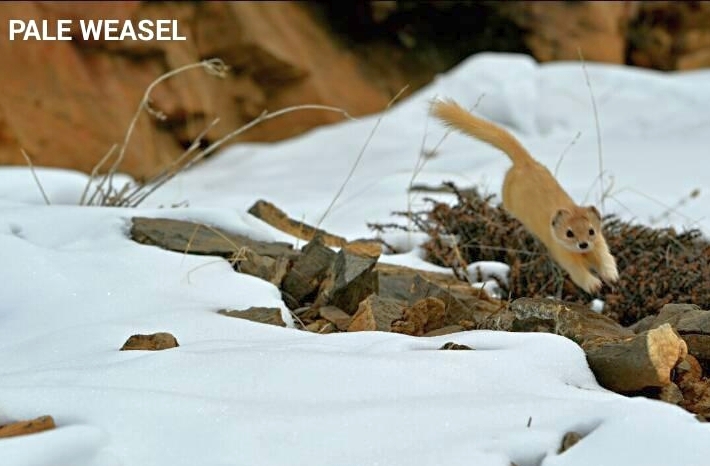




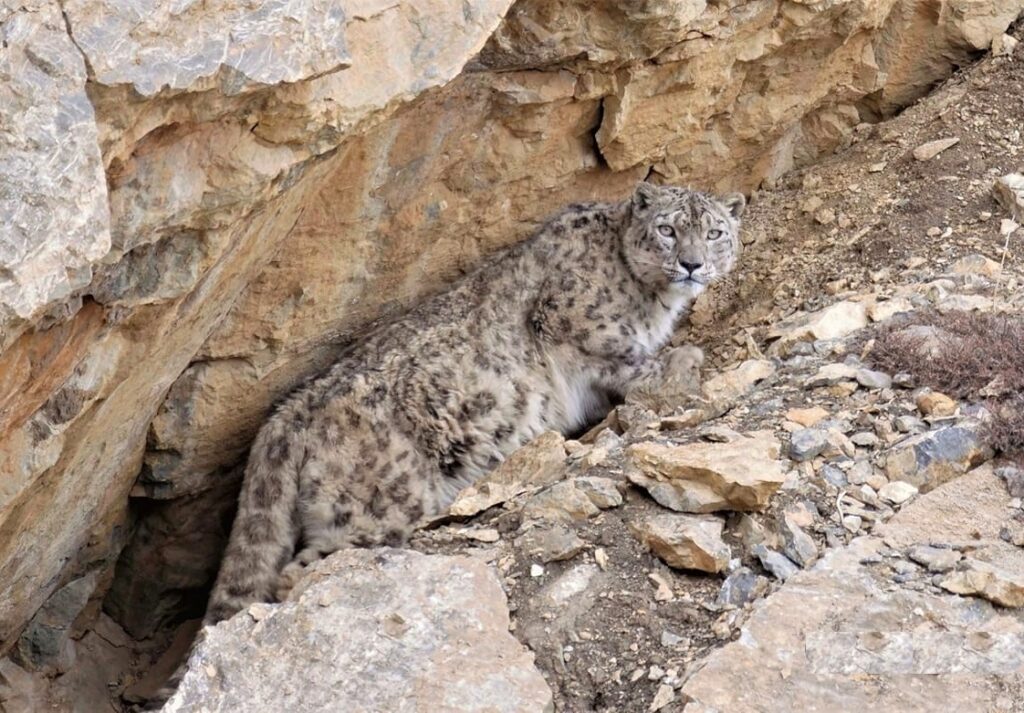
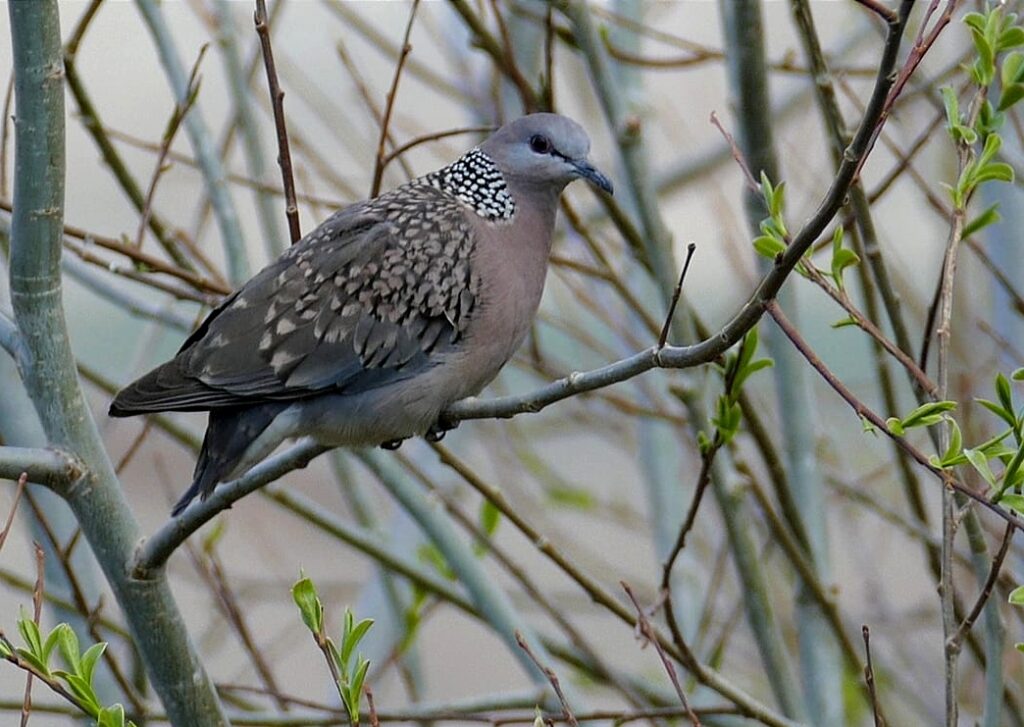


Spiti Valley Winter Road Trip Itinerary
Regions Covered:
Shimla, Sarahan, Kalpa, Nako lake, Tabo, Dhankar, Pin valley, Lalung, Ki, Kibber, Gete, Tashigang, Hikkim, Langza and Komic.
SEASON: December – March
CLIMATE: Bitterly Cold
MAX. ALTITUDE: 4,520 m (Komik Village)
NUMBER OF DAYS: 10 days
TRIP TYPE: Road Trip & Snow Hiking
- Day #1: Shimla – Sarahan: Sarahan Altitude 2100 m Distance covered 180 km. Drive Duration: 7 hours (overnight at hotel).
- Day #2: Sarahan – Chitkul village: Chitkul Altitude 3400 m. Distance 106 km. Drive Duration; 5-6 hours (overnight at hotel).
- Day #3 Chitkul – Sangla – Kalpa Village: Kalpa altitude 3000 m. Distance 75 km. Drive Duration: 6-7 hours. (Overnight at a hotel)
- Day #4: Kalpa – Nako – Gyu – Tabo. Tabo altitude 3300 m. Distance 160 km. Duration: 7-8 hours (Overnight at a Homestay)
- Day #5: Tabo – Dhankar – Mud Village. Mud altitude 3900 m. Distance 70 km. Drive duration: 4 – 5 hours (overnight stay at a homestay).
- Day #6: Mud, Pin valley – Kibber village: Kibber altitude 4270 m. Drive duration: 6–7 hours (overnight at a Homestay).
- Day #7: Rest & acclimatization day at Kibber. Explore Kibber village and Kibber wildlife sanctuary.
- Day #8: Kibber – Langza- Komic-Hikkim-Tabo
- Day #9: Tabo – Reckong Peo
- Day #10: Reckong Peo – Shimla
Snow Leopard Safari in Spiti valley
Spotting of wildlife (specifically the apex predator in Spiti Himalaya, i.e., snow leopard) includes short hikes and trekking in the snow in Pin valley and around Kibber Wildlife sanctuary.
Kibber is the base camp village for treks like Parang La, Kanamo peak, Kibber-Tashigang, and Kibber-Rumste village trek.
Raacho Trekkers
One should be in no illusion about how difficult it would be to photograph a sheepish snow leopard at a decent range. Their camouflage, surreptitious movement and shy demeanor make them difficult to spot and locate.

Winter is the best time to spot the mountain cats because snow will drive them to lower elevations where it’s easier to find food, and starting in mid-February, mating season commences, so you’re more likely to get leopards crossing into each other’s territory.
How to visit Spiti during winter?
Rohtang and Kunzum pass get closed in late September or early October month, so the only way to reach Spiti is through Shimla – Rampur Bushahr – Reckong Peo – Nako – Tabo – Kaza route.
Kinnaur district headquarters Reckong Peo is well connected to Shimla and Chandigarh. Direct public transport (HRTC) buses are runs from Delhi/Chandigarh/Shimla to Reckong Peo. Shimla – Reckong Peo road remains open (or resume normal traffic after 1/2 days) even when there is a long spell of heavy snowfall.
A HRTC bus runs from the Reckong Peo bus stop in the morning ( departure 7 AM) and reaches Kaza around 6 PM. No public transport exists inside the Spiti valley in winter so traveling by own vehicle or shared taxis are the only mode of transportation.

Snow Leopard Trivia
- Unlike the other wild cats, Snow leopards don’t “roar”
- Although Snow Leopards are usually found between 3,000m-4,500m altitudes, snow leopards can range up to 6,000m!
- There’s no record of a snow leopard ever killing a human
- A snow leopard can jump 10m in one (big) leap!
- Snow leopards are mostly solitary.….unless it’s mating time
- Climate change is possibly the greatest long term threat to the snow leopard
- Snow leopards have light green or grey eyes, most big cats have yellow/orange eyes
- Snow leopards are most active at dawn and dusk
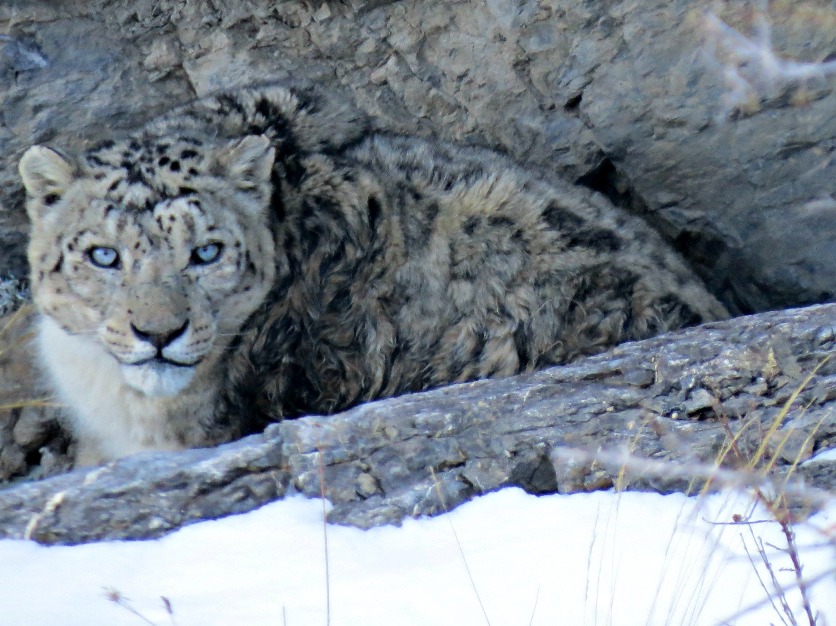


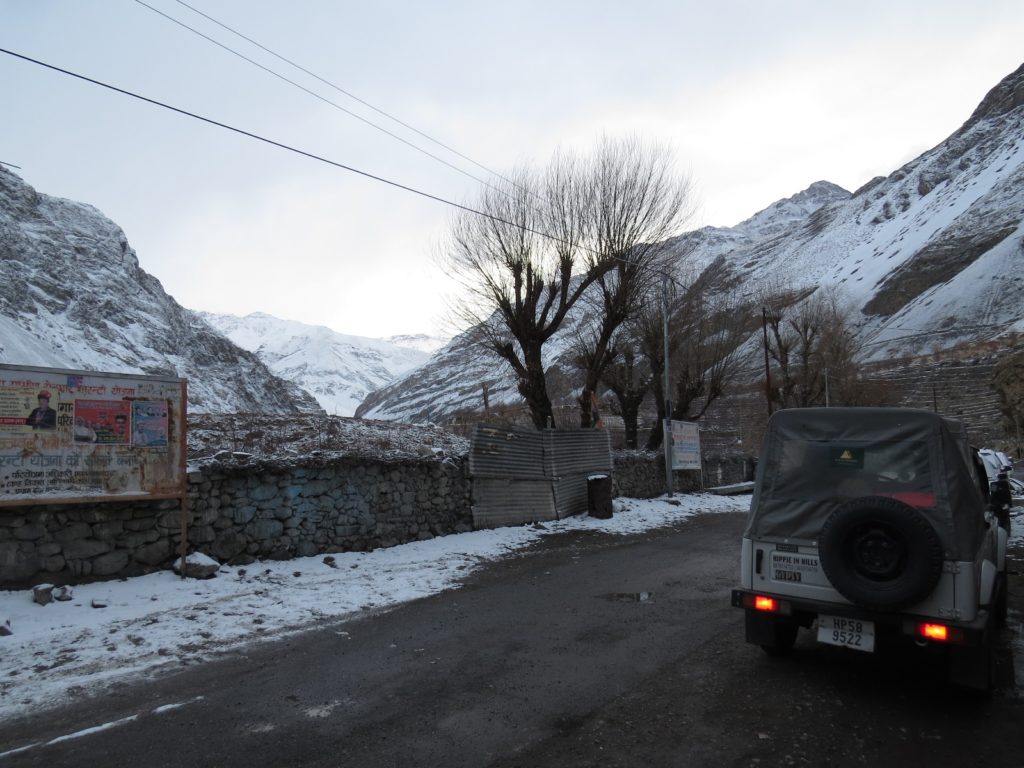



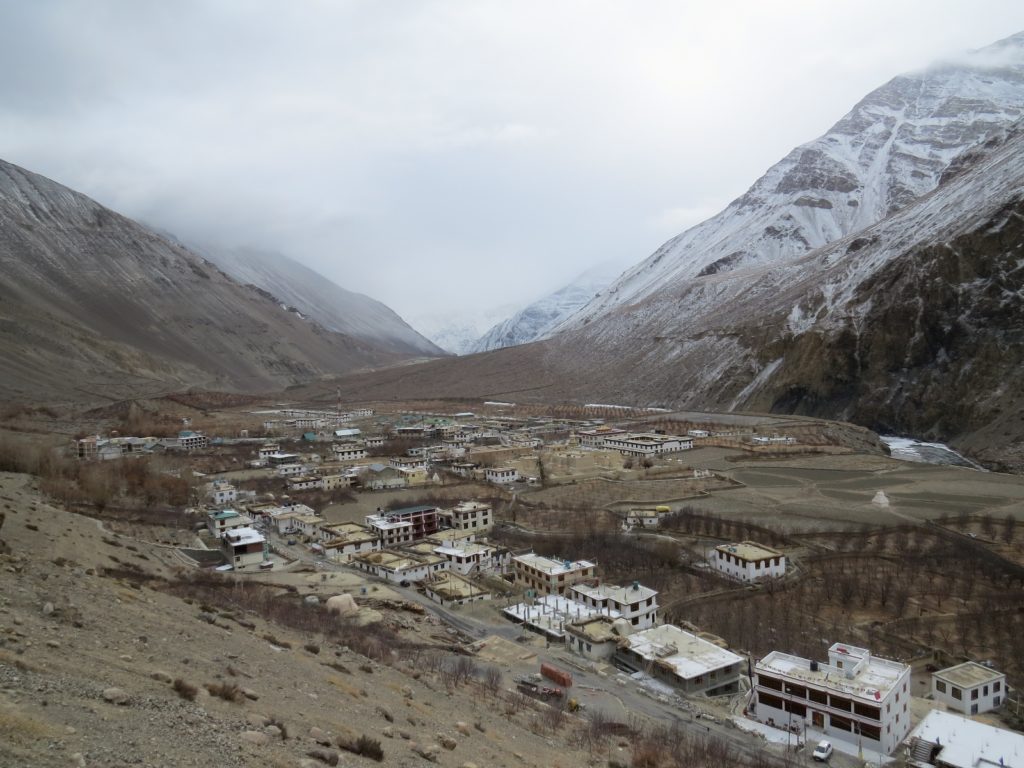



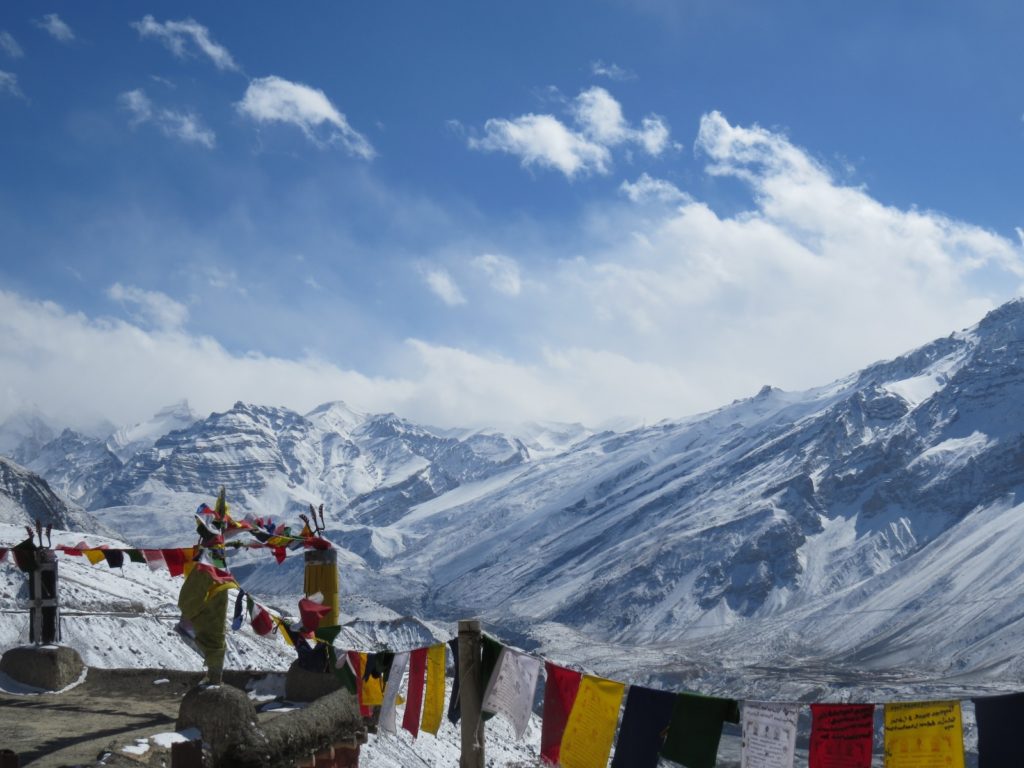


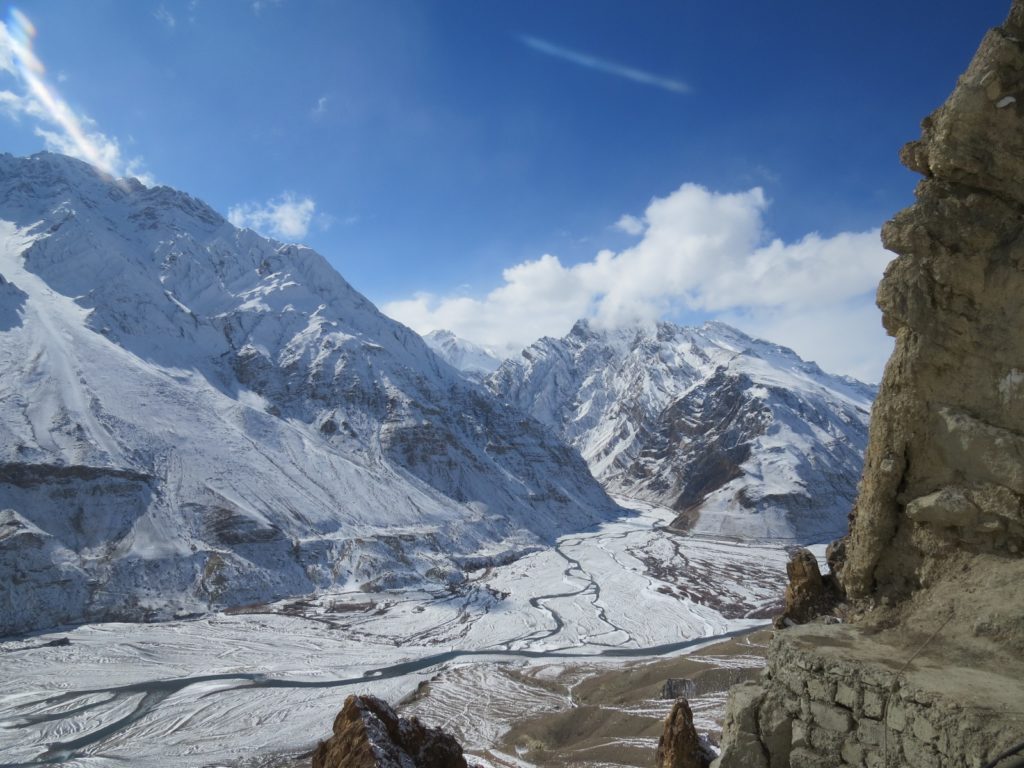
















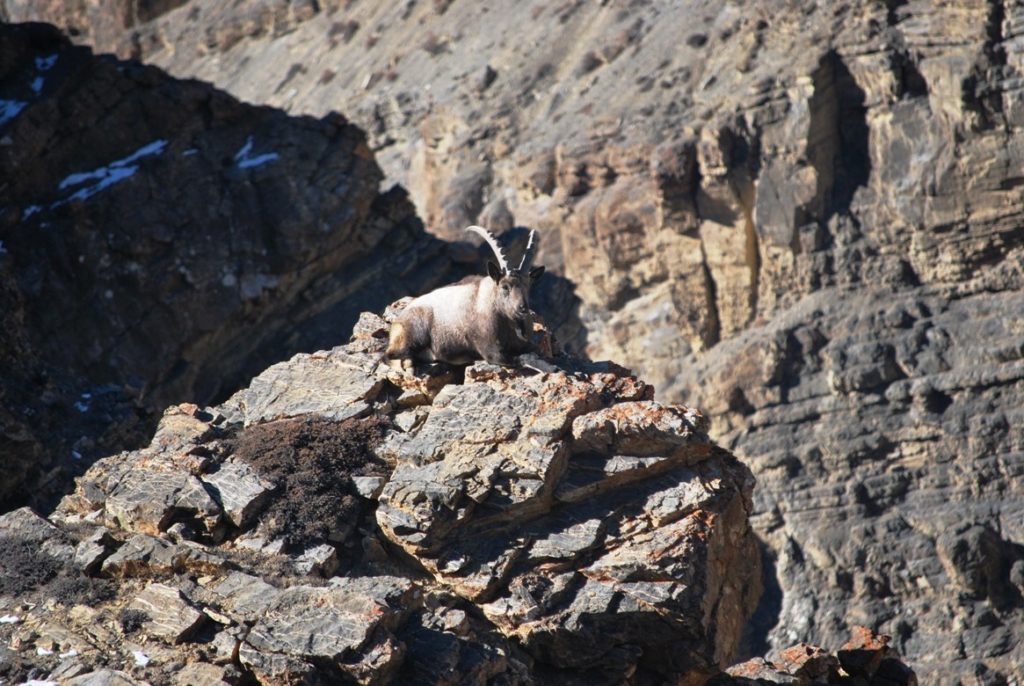




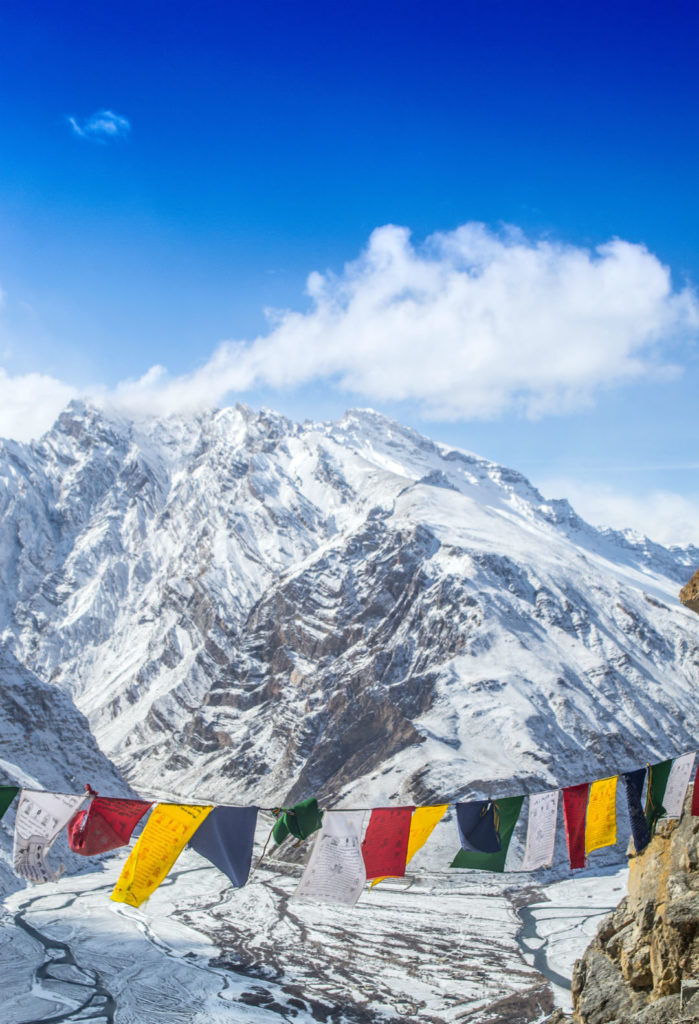



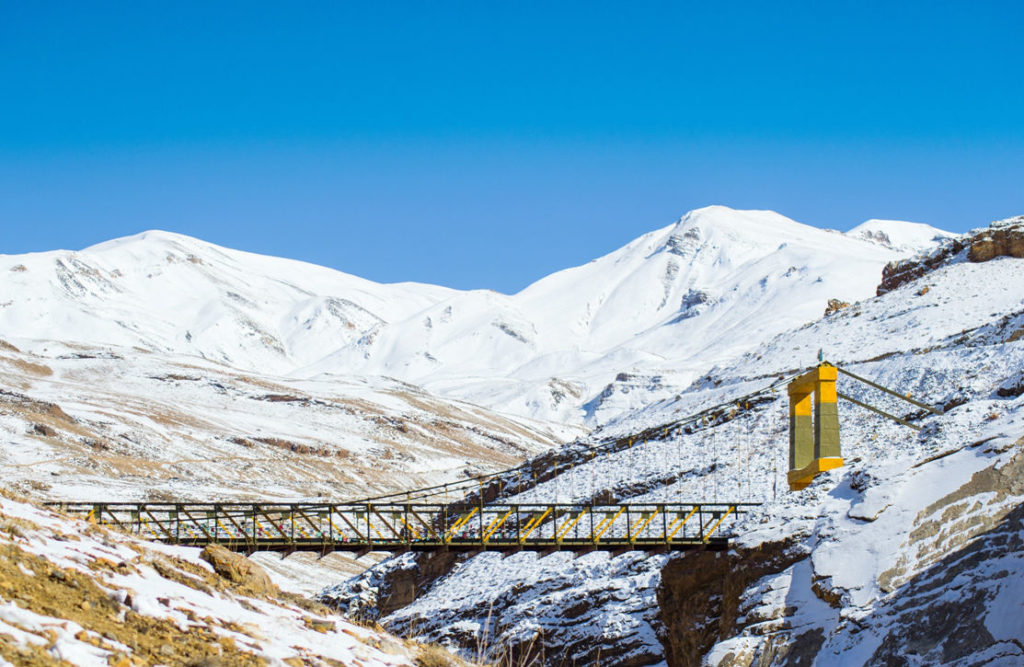







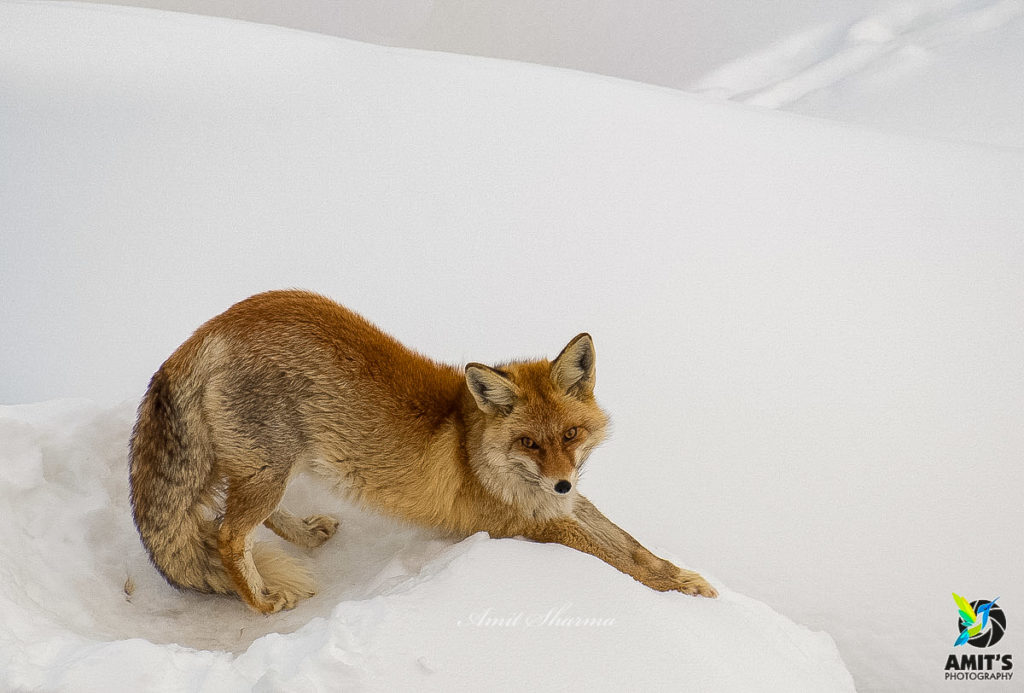


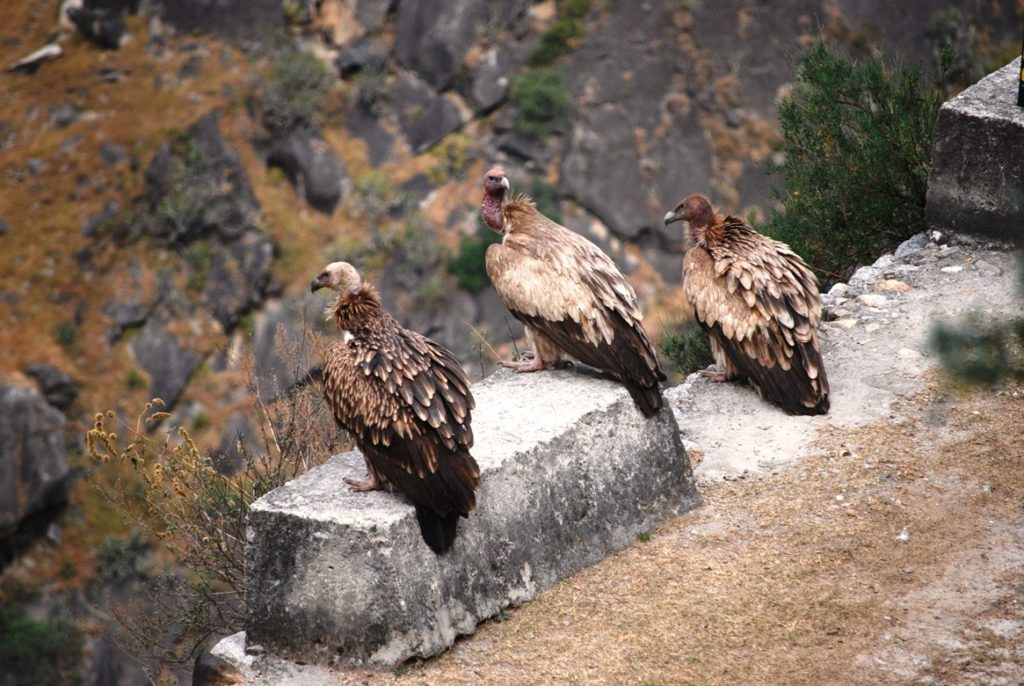
High in the lofty peaks of Central Asia, a rare, elusive cat sits curled on a rocky ledge overlooking a deep, rugged valley. A cold wind wisps frozen snow into the thin air, creating a dazzling silver shower against a brilliant azure sky. It’s quiet up high, just the occasional crack of a distant glacier, a few rocks dancing down the shoulders of near-vertical mountains. Across the valley, a herd of blue sheep, the cat’s favorite food, grazes peacefully on a steep southern slope. Piercing feline eyes are fixed on nothing but see everything. There are no people in sight, just miles and miles of snow-clad peaks in every direction-a sign that all is well at the roof of the world. The big cat rises contentedly, rubs at the knees of the mountain gods, then disappear.
Tracks, vanishing into the snowy mist, are the only evidence it was really there. This near-mythic beast is the snow leopard, the highest mammalian predator, and symbol of all that is free and truly wild in the mightiest mountains on earth-its presence, its aura, a living soul given to citadels of stone and ice. Like no other large cat, the snow leopard evokes a sense of myth and mysticism, strength and spirit. A mystery cat shrouded in a snowy veil, seldom seen but always present.
To the West, the snow leopard is a cat of strange, foreign lands, a prowler of high peaks, symbol of survival in the high mountains. To Asia, the snow leopard is embedded in ancient lore and lately has become the symbol of unity and conservation in a region Marco Polo described as “noisy with kingdoms.” For local people who share their mountain realm, there is respect and fear.
Not personal fear, for the snow leopard doesn’t harm humans, but fear of the occasional night stalker that kills precious livestock, the literal lifeblood of existence for those hardy souls who share the snow leopard’s world. The snow leopard is endangered, Imperilled by ever-growing human encroachment into its mountainous world. Even with international protection, it is still killed for its bones and luxuriant fur or in retaliation for killing livestock. Climate change adds another dimension of stress to the snow leopard’s world, warming the great mountains, pushing the snow leopard and its prey higher and higher. Like the polar bear and Arctic ice, the snow leopard’s habitat is sharply defined with no options for a retreat or alternative refuge-the balance of life is easily degraded but not easily restored. Beyond the mountaintops lies extinction. Strangely, the snow leopard ranks high among notable rare animals-alongside the bald eagle, polar bear, lion, tiger, and panda-yet it is perhaps the least studied and certainly the least written about. There is a good reason why we know so little about the snow leopard. Its support system is a delicate veneer of vegetation draped over the highest and most rugged landscapes on earth.
And the great mountains are not always a friendly place. For centuries, treacherous travel, rugged terrain, ageless border disputes, and political intrigue have kept this region of the world from the in-depth study. The seven great ramparts of Central Asia present one of the most formidable and foreboding environments in the world. Their names alone evoke a sense of wonderment: Altai, Pamir, Tien Shan, Kun Lun, Hindu Kush, Karakorum, and the mighty Himalaya. Here, in the land where the snow leopard finds comfort, humans can suffer frostbite and sunburn at the same time. Anyone who has traveled in this region will attest that half the enterprise (and half the adventure) is just getting around these impressive giants of the world. To study the snow leopard is as much a bold adventure as a scientific expedition. The high places attract two kinds of adventurous spirits: those who drink at the moment and move on, and those who are moved deeply by an awesome connection with something beyond human description. The latter cannot leave behind only footprints. Their souls would not bear it; they must in some way tithe to the spirit mountains, the spirit cat-in time, deeds, words.
— Snow Leopard: Stories from the Roof of the World by Don Hunter.
Weather conditions and essentials to carry
It gets really frigid. Winter travel requires serious protection from the bone-chilling Himalayan weather. So, you’re going to need layers. Lots of them, along with thick winter clothing. If anything, you shouldn’t underestimate how cold and windy it can be. The temperature often drops to -30 °C. The air in Spiti is very thin due to high altitude and no vegetation so it is advised to see your doctor and take the required medication. If you have prior experience of trekking or hiking high altitude terrains, then there shouldn’t be any problems related to high altitude sickness.
- Backpack (70-90 liter) for multi-days Hikes.
- Trekking Boots – High ankle support boots.
- Trek Gaiter – To prevent snow/moisture seeping inside the boot.
- Trekking Pole
- Down Jacket – Thick, windproof material, fleece and feather based recommended.
- Trek Pants – (at least 3 Trek Pants), no Jeans. Synthetic, Quick Dry fabric-based Trek Pants are ideal.
- Full sleeve woolen/fleece – (at least 2)
- Full sleeve T-Shirts – (at least 4)
- Thermal Inner – (for Lower body recommended/ upper is optional)
- Balaclava
- Sunglasses – It is a must for a snow hike. UV rated ones.
- Hand gloves
- Socks – (3 pair of woolens and 4 pairs of cotton socks)
- Water bottle – (2 water bottle, each 1 liter). Avoid plastic drinking bottles.
- Toiletries (Sunscreen – SPF 60+, moisturizer, light towel, lip balm/chapstick, small soap, toilet paper, wet tissue)
- Headlamp/LED Torch
- Energy bars/dry fruits. Very essential for surviving the winters in Kinnaur & Spiti
Medicine Kit
Stay availability in Kinnaur & Spiti Valley during winters
There are plenty of options to stay in Kinnaur. Stay options are limited to only homestays in Spiti as most of the hotels get closed due to water and heating issues.
Kalpa-Charang winter hikes and recces
Charang is the last village on the Indo-China Border. The last ITBP post is located in this village. For the city folks, the village offers a complete escape from the busy city life. No network coverage—bosses can’t call you. For a comfort trip seeker, I will recommend Charang only during summers. Kalpa in winters, with the temperature plunging to about -15 °C & heavy snowfall blocking all the roadways for weeks—the place is either for the brave hearts or for ignorants like us.



















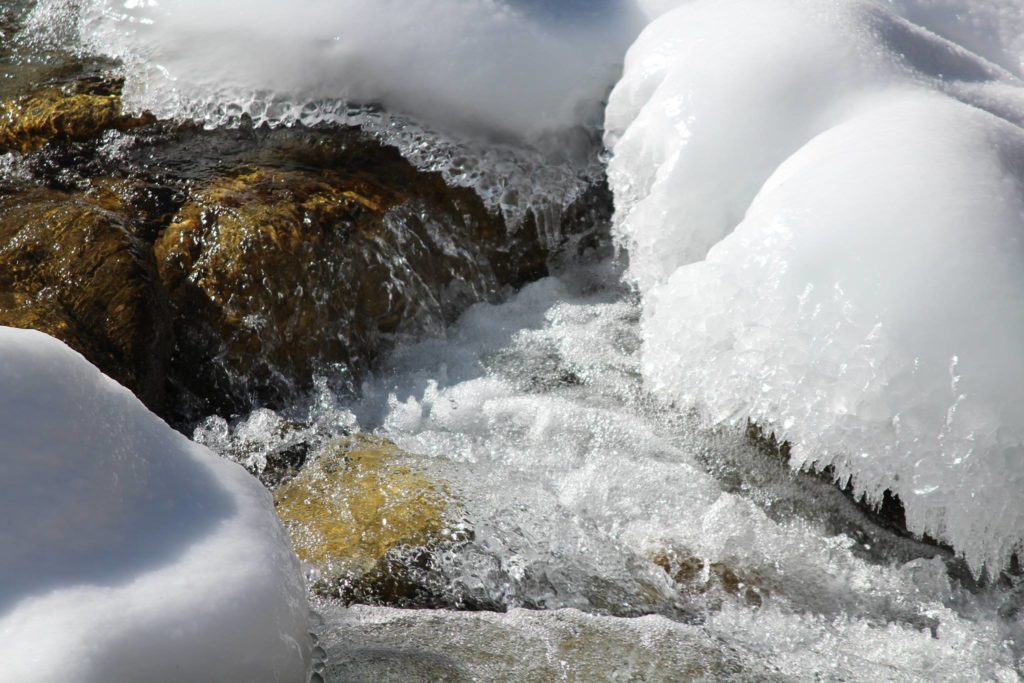

- HRTC Baggage Policy & Terms Decoded (Tips & Fee Chart) – April 21, 2024
- Inner Line Permit (ILP) for Kinnaur & Spiti Valley (Step-by-Step Guide) – August 3, 2023
- Snow Leopard Photo Tour in Spiti Valley (Kibber WLS) – February 2, 2022


Leave a Reply